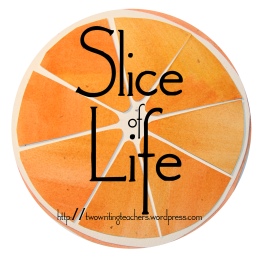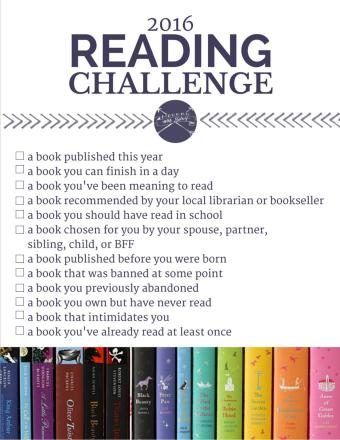“The real voyage of discovery consists not in seeking new landscapes, but in having new eyes.”
Marcel Proust
Welcome to the Poetry Friday Roundup! I’m happy to welcome you all today, and I have a special treat for you. To celebrate the publication on Monday of her new book, When the Sun Shines on Antarctica (Millbrook Press), Poetry Friday regular Irene Latham has stopped by to answer a few questions and to share two of my favorite poems from this delightful collection.
In these poems, Irene looks at at the flora and fauna of Antarctica with new eyes and discovers just the right images and metaphors to bring the creatures of this forbidding land to life. At the same time, she skillfully weaves together science and wonder. Fifteen action-packed poems evoke the delicate interaction between a wide variety of species, including penguins, seals, and whales, and the harsh environment of the Antarctic summer, where temperatures remain “well below zero.”
Anne Wadham’s illustrations perfectly complement the playful tone of Irene’s poetry. A glossary and list of books and websites for further reading round out the book, and make it the perfect addition to any classroom library. In conjunction with When the Sun Shines on Antarctica, Irene has launched the Antarctica Explorers Club for young scientists eager to learn more about this remote and fascinating continent and its inhabitants.
Here’s a perfect example of how Irene sees a familiar creature with new eyes:
“Krill in Space”
The sea
is their universe
as they swim,
sway,
drift—
a trillion
tiny astronauts
without
a ship.
They weave
through galaxies
of gobbling
nets,
dodge
black holes
that look like safe
caves to explore—
but aren’t.
And this poem makes me want to go sledding with these penguins!
“Emperor Penguins at Play”
At the top of the hill
they belly flop,
drop,
slide, and glide on built-in sleds.
Out in the ocean,
eager to fly,
they swim, breathe, swim
as they leapfrog waves.
In need of rest,
they board an ice ship
where they ride and revive,
play endless rounds
of Red Light, Green Light,
Penguin Says,
and I Spy.
© Irene Latham, 2016. Shared with permission of the author.
Welcome, Irene!
Thank you, Catherine!
The jacket flap copy says that your “exploration of Antarctica began when [you] read The White Darkness by Geraldine McCaughrean. Can you elaborate on how you came to write this book?
Many (all?) of my books arise out of my obsessions. But first, a confession: until I read THE WHITE DARKNESS, I never really gave Antarctica much thought. Like many folks, I lumped the poles together –Antarctica and the Arctic, as if they were one and the same, just on opposite ends of the globe. It never occurred to me that the cartoons showing polar bears and penguins together couldn’t possibly be true! I had a lot to learn, obviously. So, THE WHITE DARKNESS. In addition to being a riveting story, this book oh so poetically places the reader in Antarctica. One line from the book really started it all: McCaughrean describes Antarctica as “a mosaic of white puzzle pieces saying, ‘solve me! Solve me!’ How’s that for an invitation? I started reading everything I could about Antarctica, and eventually poems began to emerge. It helped that I had just done DEAR WANDERING WILDEBEEST, which also focuses on the animals in a unique ecosystem. ANTARCTICA was a logical follow-up, and I’m thrilled to share both books with illustrator Anna Wadham.
Can you briefly describe your research process?
Since I’ve never visited Antarctica, my research involved reading lots of books about Antarctica, reading Antarctica scientist blogs, visiting websites, and talking to experts like fellow Birminghamian James McClintock, who has made nearly 20 research trips to Antarctica! Jim recorded many of his adventures in a book titled LOST ANTARCTICA: Adventures in a Disappearing Land, and I’m thrilled that he and I will be presenting a program together to celebrate my book’s release.
How do you decide on the form for each poem?
I love writing free verse poems, so it’s not wonder these are all free verse — with a little rhyme and alliteration and rhythm thrown in! It wasn’t a decision so much as just the way it happened. The fun part was coming up with imaginative ways to present each animal: Mrs. Weddell shopping for a new coat; an Adelie penguin placing a personal ad; elephant seals wrestling WWE style; and so forth.
Your website is full of wise advice for writers and poets. This is my favorite: “Keep on writing until your words shimmer and shine and actually produce electricity.” Do you have any specific advice for teachers and students who are inspired to use When the Sun Shines on Antarctica as a mentor text for writing nonfiction poetry?
Thank you! Shimmer and shine and electricity are certainly worthy goals, aren’t they? Two things come immediately to mind when I think about advice for writing nonfiction poetry: specificity and surprise. I think the impulse when writing nonfiction poetry is to include all the facts in the poem, kind of a big-picture look at the animal, when what poetry demands is going small, looking closely, choosing one moment or detail that you really want to showcase. Our goal as poets is to explode the moment. So, for Mrs. Weddell, the poem is only about the transition from wooly winter coat to sleek summer style, nothing else. It’s SO HARD to be specific, because that means making tough choices. But tough choices are exactly what being a poet requires. The second thing is to focus on surprise. Sometimes the subject itself is the surprise, such as the brinicle poem in this collection. Who (except Laura Purdie Salas) has ever heard of a brinicle? (View a great video here!) Or the surprise can be making a surprising comparison, like the krill poem, which presents krill as astronauts lost in space. This is where the joy and magic happens — when we as poets allow ourselves to be imaginative and whimsical and creative in the connections we are making between one thing and another. Sometimes it takes many drafts to find that magic, so patience is also required!
Who are your poetic influences? Favorite poets?
My most favorite poets are Poetry Friday poets! I am never more inspired/educated/delighted than when I read Poetry Friday posts. The first poets I loved as a child were Shel Silverstein and Dr. Seuss. As a teen I loved Khalil Gibran. Other well-known poets I turn to again and again are Mary Oliver, Langston Hughes, Pablo Neruda, Naomi Shihab Nye, Sharon Olds. I’ve often said that if I was stuck on a deserted island, I would want with me GOOD POEMS, edited by Garrison Keillor. In the world of children’s poetry, I don’t think it gets any better than Valerie Worth. I keep ALL THE SMALL POEMS AND FOURTEEN MORE on my nightstand year-round.
Your next book, Fresh, Delicious (WordSong/Boyd’s Mill Press) will be out in March. What’s on the horizon for you after that?
Thank you for mentioning FRESH DELICIOUS! I had so much fun writing poems about farmers’ market fruits and vegetables, and I am in love with Mique Moriuchi’s illustrations. Next up is a book I co-wrote with Charles Waters called IT’S NOT BLACK & WHITE. It’s about a white girl (me) and a black boy (Charles) who are forced to work together on a 5th grade poetry project, and they have a conversation about shoes and hair and church and recess and more — all through the lens of race. It’s largely autobiographical, and it was one of the toughest, most rewarding projects I’ve ever worked on. The book will release from Lerner in 2017 with illustrations by Sean Qualls and Selina Alko.
Thank you again, Irene, for stopping by and sharing your poetry and wisdom with us today!
And now for the roundup! Please click to add your link and read more poetic offerings.














![© Nevit Dilmen [CC BY-SA 3.0 (http://creativecommons.org/licenses/by-sa/3.0) or GFDL (http://www.gnu.org/copyleft/fdl.html)], via Wikimedia Commons](https://readingtothecore.files.wordpress.com/2016/01/happy_new_year_01-svg.png?w=247&h=241)